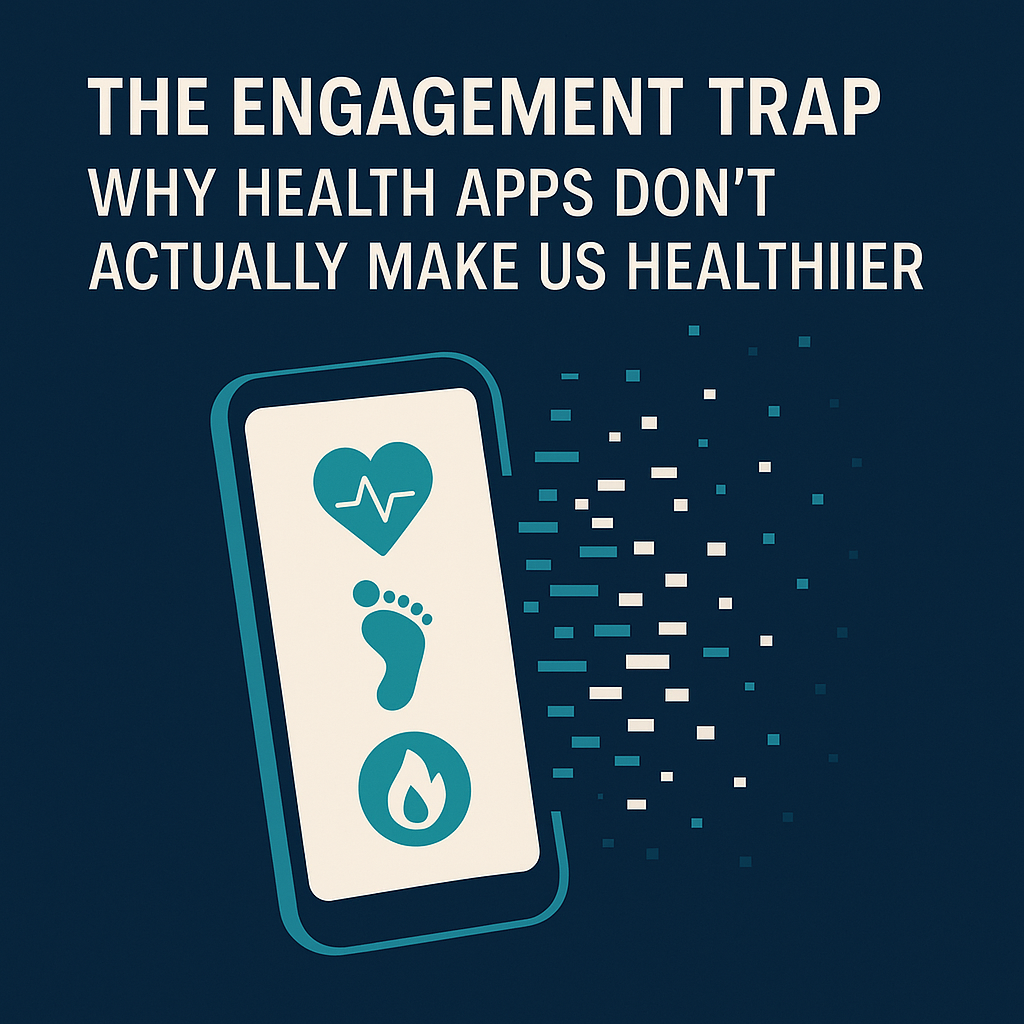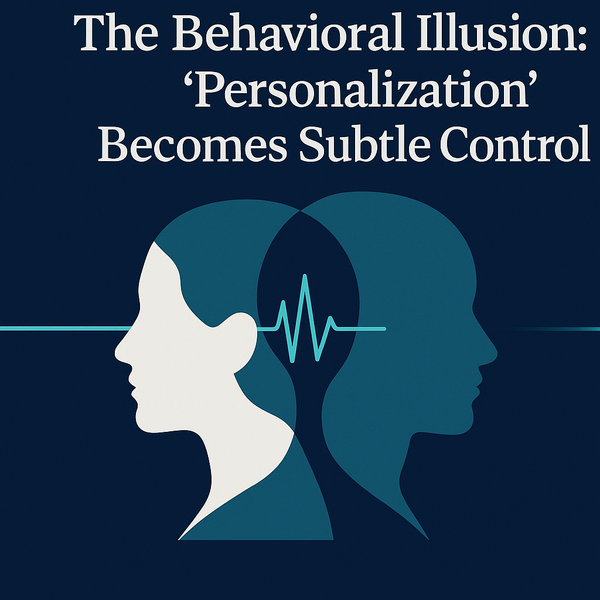The Engagement Trap: Why Health Apps Don’t Actually Make Us Healthier

Key Takeaways
- Health apps excel at keeping us clicking, not necessarily getting us healthier.
- Engagement ≠ transformation: activity in an app rarely equals lasting behaviour change.
- The real problem is misaligned incentives, products optimize for usage, not outcomes.
- True digital health impact requires aligning design, data, and rewards with real change.
Power, Not Progress
Our phones now buzz with step counts, sleep scores, calorie goals. The pitch is simple: more data, more engagement, better health.
But a decade into the digital-wellness boom, the results are thin. Fitness trackers, meditation apps, and diet platforms are everywhere, yet obesity, anxiety, and chronic disease keep rising. The uncomfortable truth: engagement has become a substitute for improvement.
The Logic of Engagement
Health apps have imported the playbook of social media: streaks, badges, reminders, and dopamine-loop design. Engagement metrics (opens, minutes, notifications delivered) are easy to measure, easy to celebrate, and easy to monetize.
But engagement is not the same as outcome.
A systematic review of mobile apps for cardiovascular disease prevention found that while roughly two-thirds of studies showed links between higher app engagement and weight loss, there was no consistent improvement in other outcomes like diet quality or blood pressure (NIH PMC 8411427). Another study on over a million activity-tracking users showed that most “re-engagements” after inactivity looked like starting over, not sustained progress (arXiv 1802.08972).
We may not be building healthy habits. We’re building app habits.
The Gap Between Use and Change
Even the most positive studies reveal a paradox. A 2025 Nature Digital Medicine review of mental-health apps reported moderate clinical benefits (effect size ≈ 0.43), yet no relationship between the number of persuasive design features and actual health outcomes (Nature Digital Medicine 2025).
Translation: more gamification, more reminders, more “engagement”: no added impact.
When retention itself becomes the KPI, companies design for stickiness, not change. Notifications, streaks, and badges reward presence, not progress.
Misaligned Incentives
Most business models in digital health reward frequency, not efficacy. Subscription renewals and daily-active-user graphs please investors, but not necessarily physicians or patients.
Gamification techniques can make experiences enjoyable, yet systematic reviews show mixed evidence for long-term behavioural improvement (Wikipedia summary on Gamification).
This mismatch matters. The product that’s easiest to monetize is often the least transformative.
What Real Engagement Would Look Like
Real engagement isn’t clicking — it’s changing.
A recent study found that mobile apps enabling users to record and visualize historical results improved physical-activity consistency because people wanted to beat their own records (PMC 10784975).
Meaningful engagement means:
- Improvement → Better biomarkers or sustained habit change.
- Agency → Users own, interpret, and export their data.
- Feedback → Systems show trajectory, not vanity numbers.
- Alignment → Design and incentives reward outcomes, not opens.
Three guiding shifts:
- Value > Engagement — Deliver real health benefit before gamifying.
- Sustainability > Burst — Long-term behaviour beats early spikes.
- Outcome > Usage — Measure what matters, not what’s easy.
Why It Matters
For users: Daily streaks and glowing dashboards can deceive. Ask: What changed in my body, not my phone?
For providers: Without outcome validation, “digital engagement” becomes digital distraction.
For society: Equating screen-time with health progress risks hiding structural inequalities — access, environment, socio-economic gaps — behind shiny apps.
Ultimately, this is about power and trust. If product teams define “success” as minutes in app, they dictate what counts as health progress.
“We may think we’re improving our health — but often, we’re just improving our app metrics.”
The Signal Beneath the Noise
The engagement trap is real. The digital health revolution promised empowerment but delivered dashboards. If we want genuine progress, we must design for outcomes, not attention.
That means measuring what truly matters — sustained, verifiable improvement in how people live and feel. Anything else is noise dressed as progress.





